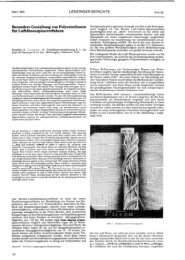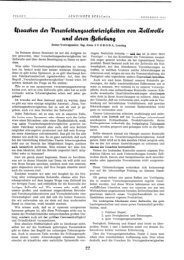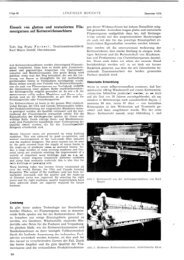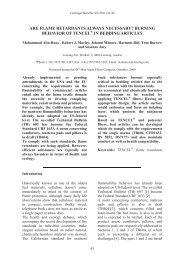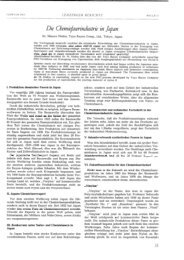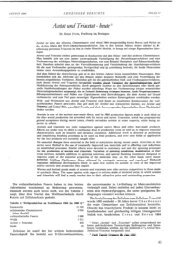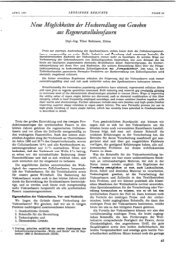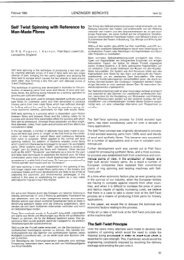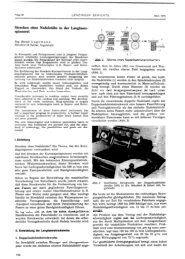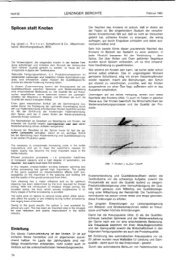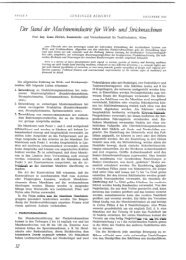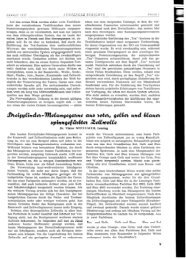Ionic liquid: current developments, potential and ... - Lenzing
Ionic liquid: current developments, potential and ... - Lenzing
Ionic liquid: current developments, potential and ... - Lenzing
Create successful ePaper yourself
Turn your PDF publications into a flip-book with our unique Google optimized e-Paper software.
Figure 2. Some of the authors among other participants of<br />
the COIL 2005 meeting in Salzburg, Austria.<br />
New <strong>developments</strong><br />
In recent years, new guanidinium-based <strong>liquid</strong><br />
salts [27], countless imidazolium salts, even<br />
imidazolium melts with carborane [28] <strong>and</strong><br />
stannaborane anions [29], pyridinium, <strong>and</strong><br />
pyrrolidinium salts, or eutectic mixtures [30, 31,<br />
32] were reported. New tetraalkylphosphoniumbased<br />
ILs with rather high viscosities showed<br />
nonlinear optical behaviour [33]. Fluorinecontaining<br />
cations [34], such as polyfluoroalkyl-<br />
1,2,4-triazolium salts [35] possess excellent<br />
properties with respect to air-, water-, <strong>and</strong> thermal<br />
stability. Low viscosity ILs, the hydrophilic<br />
dicyanamides [36] <strong>and</strong> the hydrophobic<br />
perfluoroalkyltrifluoroborate [10, 37, 38] were<br />
investigated. Low-coordinating <strong>and</strong> non-fluorine<br />
containing anions such as bis(oxalato)boranates<br />
(BOB) were studied [39]. Properties of<br />
imidazolium salts depend on the nature of the<br />
anions [40, 41] as well as on the alkyl chain<br />
length of 1,3-dialkylimidazolium cations [42,<br />
43]. The physico-chemical properties <strong>and</strong><br />
reactivities of ILs were reviewed [44, 45]. For<br />
analytical applications [46, 47, 48, 49] the nature<br />
of both cation <strong>and</strong> anion is essential. Flammability<br />
<strong>and</strong> thermal stability of trialkylimidazolium<br />
salts were found to be more dependent<br />
upon the anion than the cation [50]. Recently,<br />
energetic ionic <strong>liquid</strong>s such as azido derivatives<br />
of 1,2,4-triazolium salts, notably nitrate <strong>and</strong><br />
perchlorate [51], <strong>and</strong> other energetic azolium<br />
salts with low melting points were described [27,<br />
52, 53, 54]. However, it should be cautioned that<br />
reported melting points (Figure 3) are often<br />
unreliable due to the hygroscopicity of these<br />
materials <strong>and</strong> the existence of polymorphs [47,<br />
55]. Finally, the vapour pressure of [BuImMe]<br />
<strong>Lenzing</strong>er Berichte, 84 (2005) 71-85<br />
73<br />
[Tf2N] was experimentally determined by the<br />
Knudsen effusion method [56].<br />
Polarity <strong>and</strong> solubility<br />
The solubility of ILs in water depends on the<br />
nature of the anion, temperature <strong>and</strong> the length of<br />
the alkyl chain on the organic cation.<br />
Tetrafluoroborates, chlorides, nitrates, <strong>and</strong><br />
trifluoroacetates display complete miscibility<br />
with water, whereas hexafluorophosphates,<br />
triflimides, <strong>and</strong> other perfluorinated anions<br />
impart very low solubilities in water. The<br />
hydrophilic/hydrophobic behaviour is important<br />
for the solvation properties of ILs as it is<br />
necessary to dissolve reactants, but it is also<br />
relevant for the recovery of products by solvent<br />
extraction.<br />
Empirical solvent polarity scales give insight into<br />
solvent-solute interactions. Recently, the solvent<br />
parameters α, β, <strong>and</strong> π* of several ILs were<br />
determined using three solvatochromic dyes [57].<br />
Task-specific ILs<br />
The concept of task-specific ILs (TSILs), which<br />
incorporate functional groups designed to impart<br />
to them particular properties, stimulated<br />
applications extending far beyond those likely<br />
for more conventional ILs [58]. One important<br />
feature of these <strong>liquid</strong>s is the possibility of tuning<br />
their physical <strong>and</strong> chemical properties by varying<br />
the nature of the anion <strong>and</strong> cation. It is evident<br />
that the number of possible combinations is<br />
extremely high, <strong>and</strong> it should be possible to tailor<br />
the best IL for any application [44].<br />
The acidity of the C(2)-H in imidazolium cations<br />
is well known, <strong>and</strong> they can be deprotonated to<br />
form carbenes [59]. In order to improve the<br />
stability against basic lig<strong>and</strong>s, the 2methylimidazolium<br />
cation was introduced.<br />
ILs containing thiol-functionalised imidazolium<br />
cations [60] for the modulation of gold surface<br />
properties were synthesised. ILs with nitrilefunctionalised<br />
alkyltrifluoroborate anions [61,<br />
62, 63], zwitterionic <strong>liquid</strong>s [64, 65], <strong>and</strong> dualfunctionalised<br />
ILs [61, 66] were reported.<br />
The dicobalthexacarbonyl adduct of 1-allyl-3propargylimidazolium<br />
tetrafluoroborate was the<br />
first ionic <strong>liquid</strong> bearing an organometallic<br />
moiety covalently attached to the cation [67].<br />
1,3-dialkyne-functionalised imidazolium salts<br />
were described [68]. The chromium tricarbonyl



